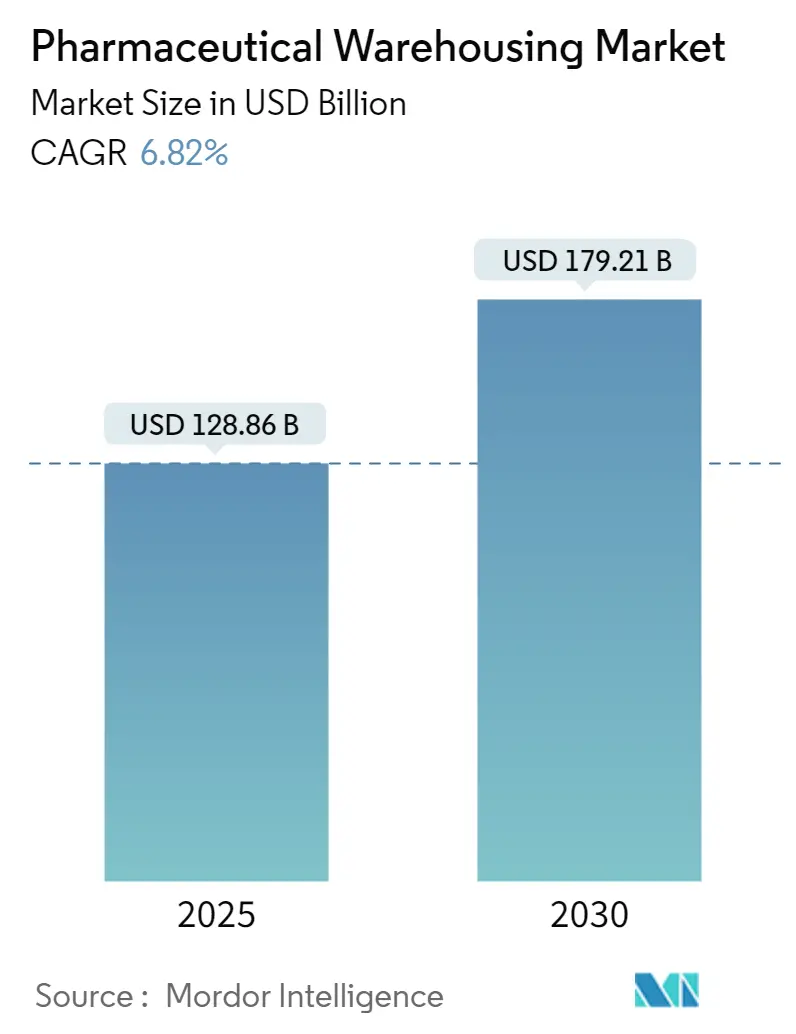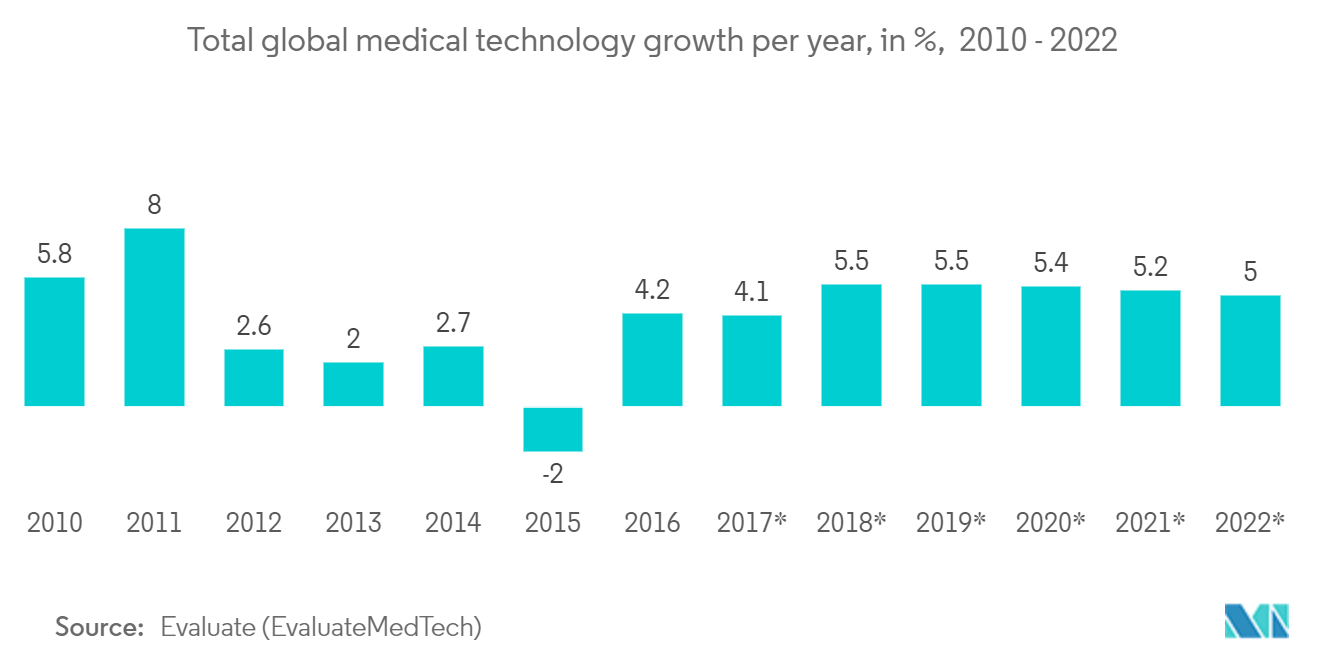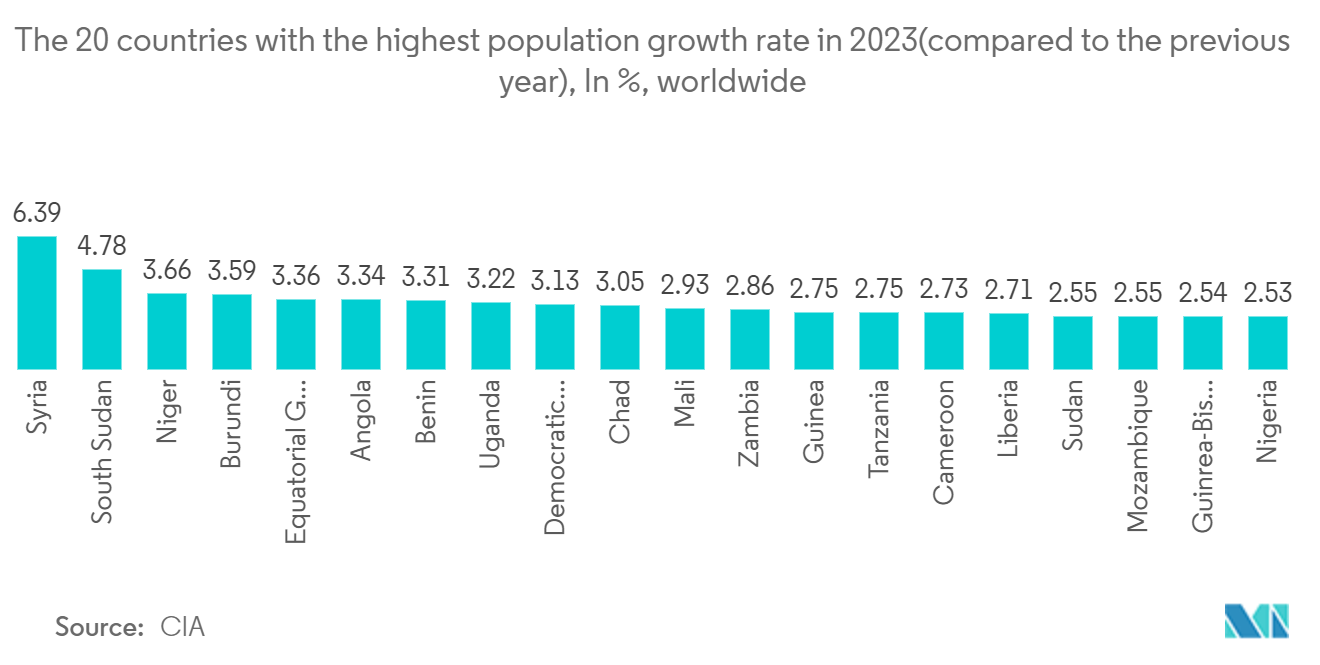Pharmaceutical Warehousing Market Size and Share

Pharmaceutical Warehousing Market Analysis by Mordor Intelligence
The Pharmaceutical Warehousing Market size is estimated at USD 128.86 billion in 2025, and is expected to reach USD 179.21 billion by 2030, at a CAGR of 6.82% during the forecast period (2025-2030).
The market's development hinges on several factors, including increased outsourcing of pharma warehousing services, heightened emphasis on quality and product sensitivity in the pharmaceutical sector, and warehouse-level automation for improved productivity and accuracy. Pharmaceutical manufacturers worldwide are expanding their production capacity and operations, leading to a heightened need for logistics between retailers and distributors for storing raw materials and finished goods. Outsourcing pharmaceutical warehousing services can reduce logistics costs by 12%, inventory costs by 8%, and logistics fixed asset costs by 20%.
Challenges faced by pharmaceutical supply chain management (SCM) include real-time visibility and technology barriers that affect order accuracy, dependability, inventory management, and compliance. Due to the growing complexity of SCM for pharmaceutical companies, certain SCM functions are outsourced to warehousing and storage service providers. Services like high-pressure processing after packaging and nonthermal pasteurization for micro-organism elimination are in high demand.
The market growth is also propelled by the rising demand for over-the-counter (OTC) medications such as VMS (vitamin, mineral, and supplement) medicines, common cold and cough medicines, gastrointestinal drugs, and dermatology treatments. The increasing importance of fast-track aid in the healthcare sector is another driving force in the pharmaceutical warehousing market.
Global Pharmaceutical Warehousing Market Trends and Insights
Technological Innovation is driving the market
- Constant technological advancements facilitate seamless communication among pharmaceutical companies, connecting manufacturers, warehouses, wholesalers, and other supply chain stakeholders. This streamlines route planning, mitigating disruptions caused by weather, delays, risks, and regulations. Employing radio-frequency identification (RFID) tags for remote logistics tracking enhances pharmaceutical safety, ensuring counterfeit drugs do not infiltrate the market.
- In the realm of cold chain products, high-performance cooling technologies and advanced design features like gaskets and insulations play a crucial role in maintaining desired temperatures while storing medicines.
- Monitoring systems operate 24x7, allowing hospital and healthcare staff to track internal storage temperatures, external ambient conditions, GPS positioning, and device health. Real-time door operations facilitated by web-based interfaces (such as B Connected, Audio-Visual Alarms, and RTMDs) enable swift responses by healthcare professionals.

Increase in Population is driving the market
- The United Nations' latest projections suggest a peak global population of around 10.3 billion people by 2050, followed by an anticipated decrease of approximately 1.2 billion individuals by 2080. This population level is expected to stabilize throughout the remainder of the 21st century.
- In 61 countries or regions, a projected population decline of at least one percent over the next 30 years is foreseen due to persistently low fertility rates and, in some cases, increased emigration rates. The recent pandemic has further impacted population dynamics, reducing global life expectancy at birth to 71 years in 2021, down from the previous year's 72.9. The pandemic likely led to short-term declines in pregnancy and childbirth in certain regions.
- By 2050, eight countries—namely the DR Congo, Egypt, Ethiopia, India, Nigeria, Pakistan, the Philippines, and Tanzania—are anticipated to contribute significantly to global population growth. Liu Zhenmin of the United Nations has cautioned that rapid population growth poses challenges to eradicating poverty, reducing hunger and malnutrition, and expanding health and education coverage.
- Considering the escalating effects of global warming and the potential rise in new bacteria and viruses, there's a forecast for increased development of vaccines to combat these evolving threats. Consequently, this development will likely lead to a rise in pharmaceutical warehousing to accommodate the expanded vaccine production.

Competitive Landscape
One of the main drivers of the market growth is the increasing demand for pharmaceutical warehousing outsourced services. However, factors such as the need for more effective logistics support in developing countries may limit the growth of the market. Some of the major players operating players are CEVA Logistics, Rhenus SE and Co. and DB Schenker AG.
Pharmaceutical Warehousing Industry Leaders
-
CEVA Logistics
-
Rhenus SE and Co.
-
DB Schenker AG
-
ADAllen Pharma
-
WH BOWKER LTD
- *Disclaimer: Major Players sorted in no particular order
.webp)
Recent Industry Developments
- June 2023: Akums set up a central warehousing facility in the Haridwar Industrial Estate. The facility will be situated on a 70,186,56 sqm campus and will be dedicated to warehousing finished goods. It will provide warehousing, handling, and services to various plants in and around the Haridwar area. Trained stores and logistics staff will support the different plants. Phase I of the project comprises a built-up area of 30,610,2 sq. mt and a ground coverage of 28,215,61 sq. mt. This phase includes 17 standalone blocks dedicated to storing Pharma's finished goods.
- September 2022: The Ceva Chill Hub offered a complete logistics management solution from the port of origin through distribution to last-mile delivery. The 10,000-square-foot multi-temperature facility accommodates up to 10,000 pallet positions within 7 independent chambers, operating at temperatures ranging from -25 °C to +16 °C.
Global Pharmaceutical Warehousing Market Report Scope
A warehouse is a structure used for the purpose of storing goods. It is a facility utilized by a variety of entities, such as manufacturers, importers, exporters, wholesalers, transport companies, customs offices, etc. Generally, warehouses are large, plain structures situated in industrial parks situated on the outskirts of cities or towns. Pharmaceutical warehousing encompasses much more than the mere storage of products; it is a process of preserving the purity of pharmaceutical drugs, which has a direct effect on human health and well-being. Goods stored in a warehouse may range from raw pharmaceutical drugs to packaging materials and finished goods related to the pharmaceutical industry.
The pharmaceutical warehousing market is segmented by type (cold chain warehouses and non-cold chain warehouses), by application (pharmaceutical factory, pharmacy, hospital, and other applications), and by geography (North America, Europe, Asia Pacific, GCC, South America, and Rest of the World).
The report offers market size and forecasts for the pharmaceutical warehousing market in value (USD) for all the above segments.
| Cold Chain Warehouse |
| Non-Cold Chain Warehouse |
| Pharmaceutical Factory |
| Pharmacy |
| Hospital |
| Other Applications |
| North America | USA |
| Canada | |
| Mexico | |
| Rest of the North America | |
| Europe | Spain |
| Belgium | |
| United Kingdom | |
| Russia | |
| Germany | |
| France | |
| Italy | |
| Rest-of-Europe | |
| Asia-Pacific | Australia |
| China | |
| India | |
| Indonesia | |
| Japan | |
| Malaysia | |
| Vietnam | |
| Thailand | |
| Rest-of-APAC | |
| GCC | UAE |
| Saudi Arabia | |
| Qatar | |
| Rest-of GCC | |
| South America | Argentina |
| Brazil | |
| Chile | |
| Rest of South America | |
| Africa | South Africa |
| Egypt | |
| Rest of Africa | |
| Rest of the World |
| BY Type | Cold Chain Warehouse | |
| Non-Cold Chain Warehouse | ||
| By Application | Pharmaceutical Factory | |
| Pharmacy | ||
| Hospital | ||
| Other Applications | ||
| By Geography | North America | USA |
| Canada | ||
| Mexico | ||
| Rest of the North America | ||
| Europe | Spain | |
| Belgium | ||
| United Kingdom | ||
| Russia | ||
| Germany | ||
| France | ||
| Italy | ||
| Rest-of-Europe | ||
| Asia-Pacific | Australia | |
| China | ||
| India | ||
| Indonesia | ||
| Japan | ||
| Malaysia | ||
| Vietnam | ||
| Thailand | ||
| Rest-of-APAC | ||
| GCC | UAE | |
| Saudi Arabia | ||
| Qatar | ||
| Rest-of GCC | ||
| South America | Argentina | |
| Brazil | ||
| Chile | ||
| Rest of South America | ||
| Africa | South Africa | |
| Egypt | ||
| Rest of Africa | ||
| Rest of the World | ||
Key Questions Answered in the Report
How big is the Pharmaceutical Warehousing Market?
The Pharmaceutical Warehousing Market size is expected to reach USD 128.86 billion in 2025 and grow at a CAGR of 6.82% to reach USD 179.21 billion by 2030.
What is the current Pharmaceutical Warehousing Market size?
In 2025, the Pharmaceutical Warehousing Market size is expected to reach USD 128.86 billion.
Who are the key players in Pharmaceutical Warehousing Market?
CEVA Logistics, Rhenus SE and Co., DB Schenker AG, ADAllen Pharma and WH BOWKER LTD are the major companies operating in the Pharmaceutical Warehousing Market.
Which is the fastest growing region in Pharmaceutical Warehousing Market?
Asia Pacific is estimated to grow at the highest CAGR over the forecast period (2025-2030).
Which region has the biggest share in Pharmaceutical Warehousing Market?
In 2025, the North America accounts for the largest market share in Pharmaceutical Warehousing Market.
What years does this Pharmaceutical Warehousing Market cover, and what was the market size in 2024?
In 2024, the Pharmaceutical Warehousing Market size was estimated at USD 120.07 billion. The report covers the Pharmaceutical Warehousing Market historical market size for years: 2019, 2020, 2021, 2022, 2023 and 2024. The report also forecasts the Pharmaceutical Warehousing Market size for years: 2025, 2026, 2027, 2028, 2029 and 2030.
Page last updated on:
Pharmaceutical Warehousing Market Report
Statistics for the 2025 Pharmaceutical Warehousing market share, size and revenue growth rate, created by Mordor Intelligence™ Industry Reports. Pharmaceutical Warehousing analysis includes a market forecast outlook for 2025 to 2030 and historical overview. Get a sample of this industry analysis as a free report PDF download.
_-_Copy.webp)


